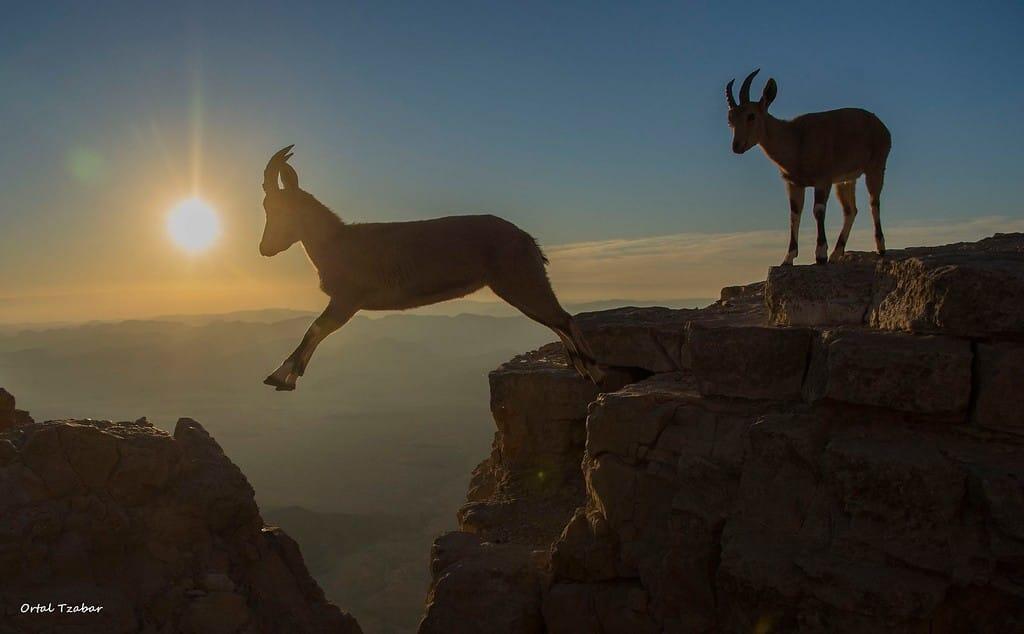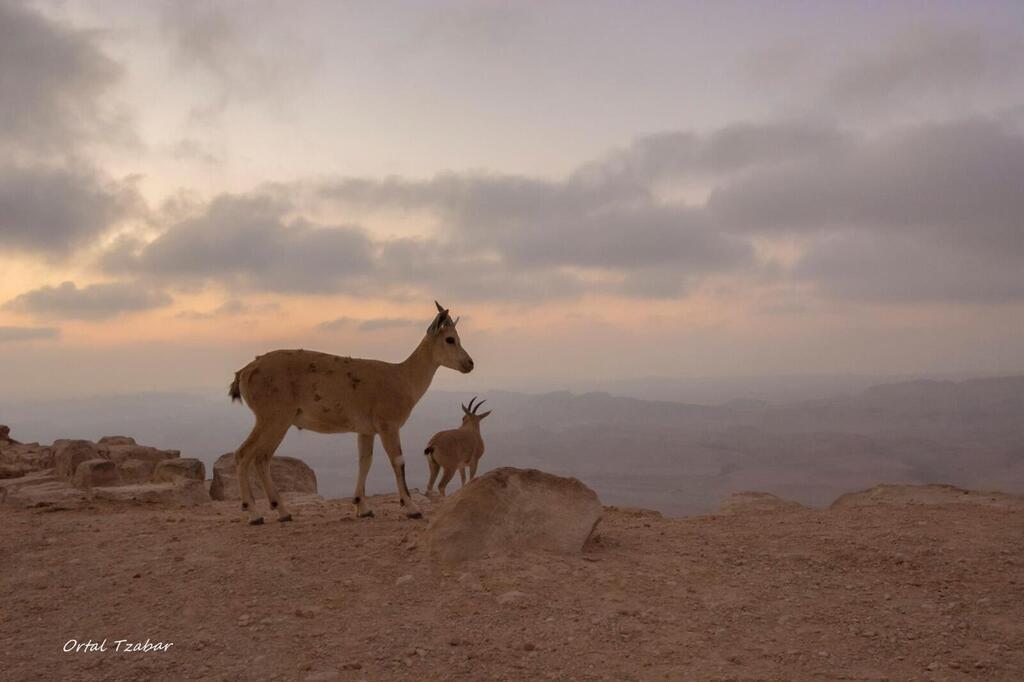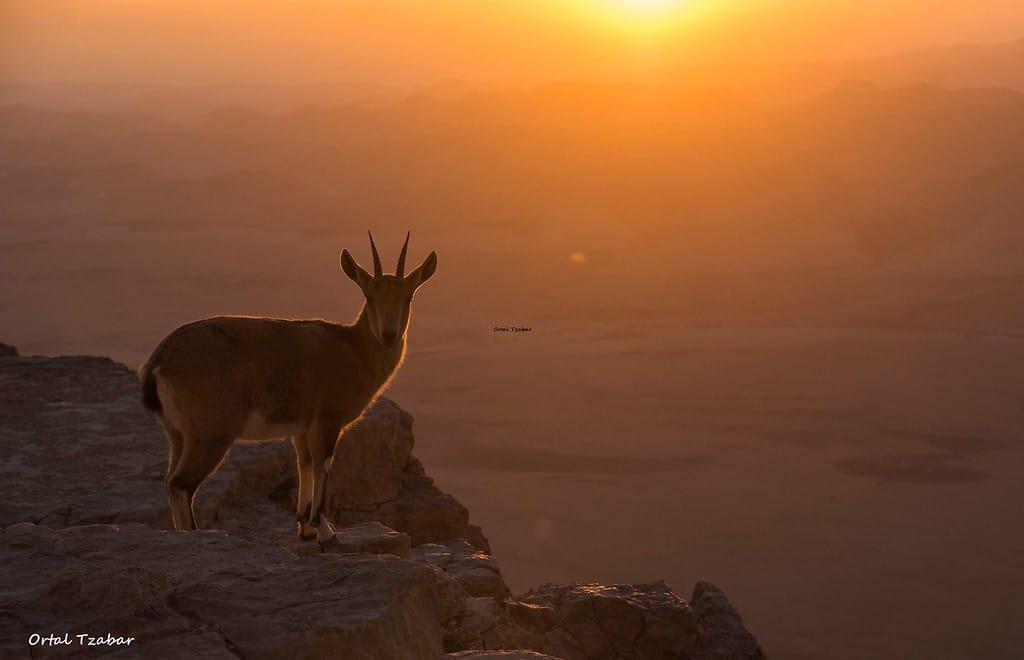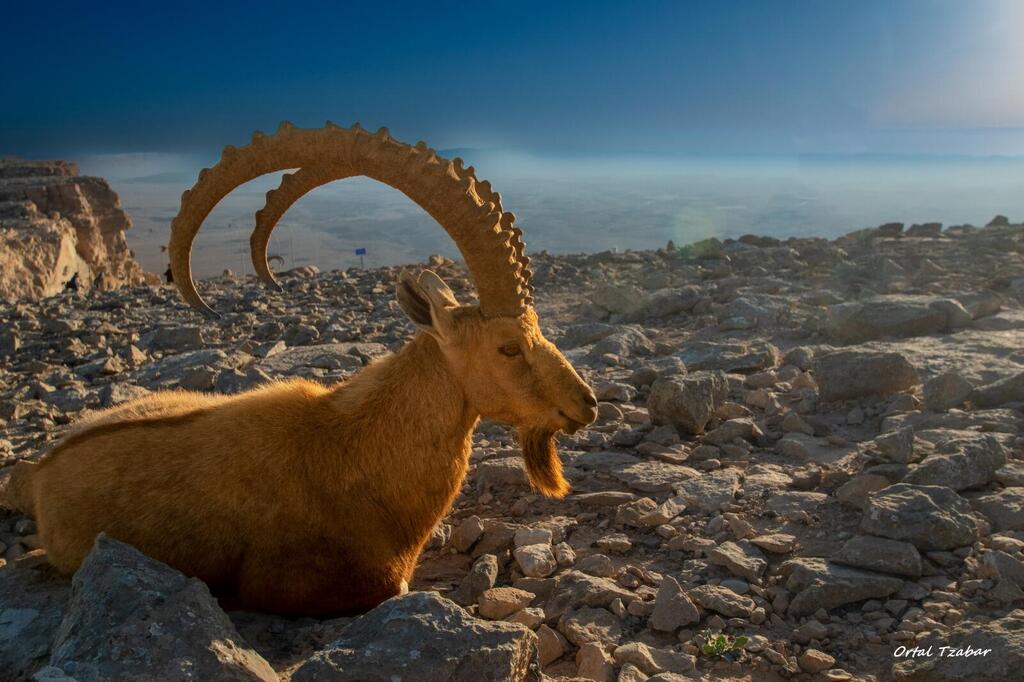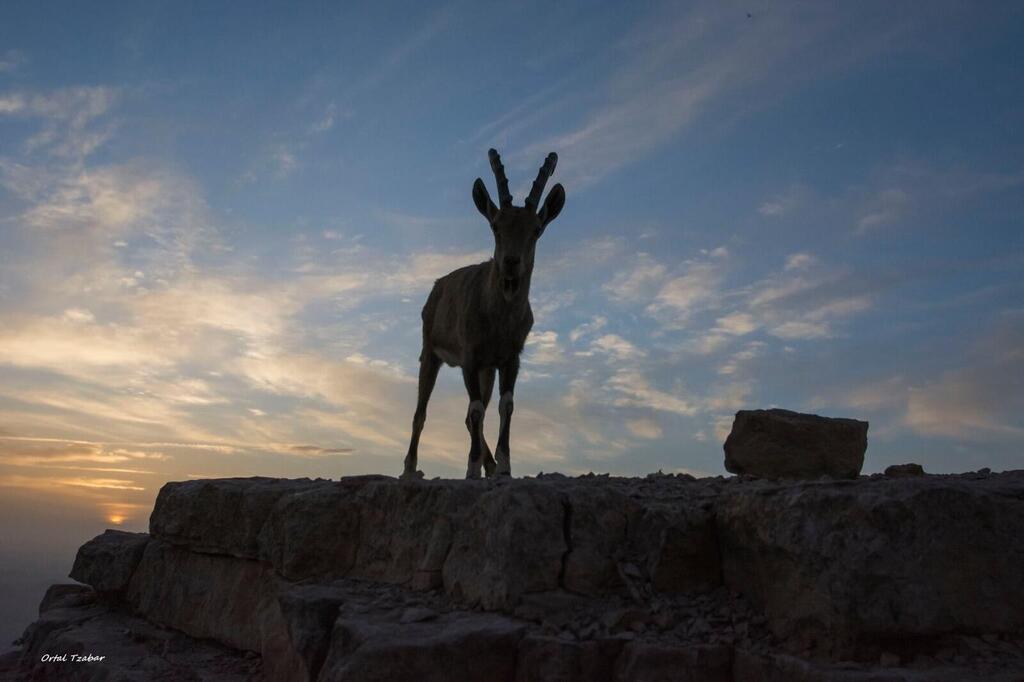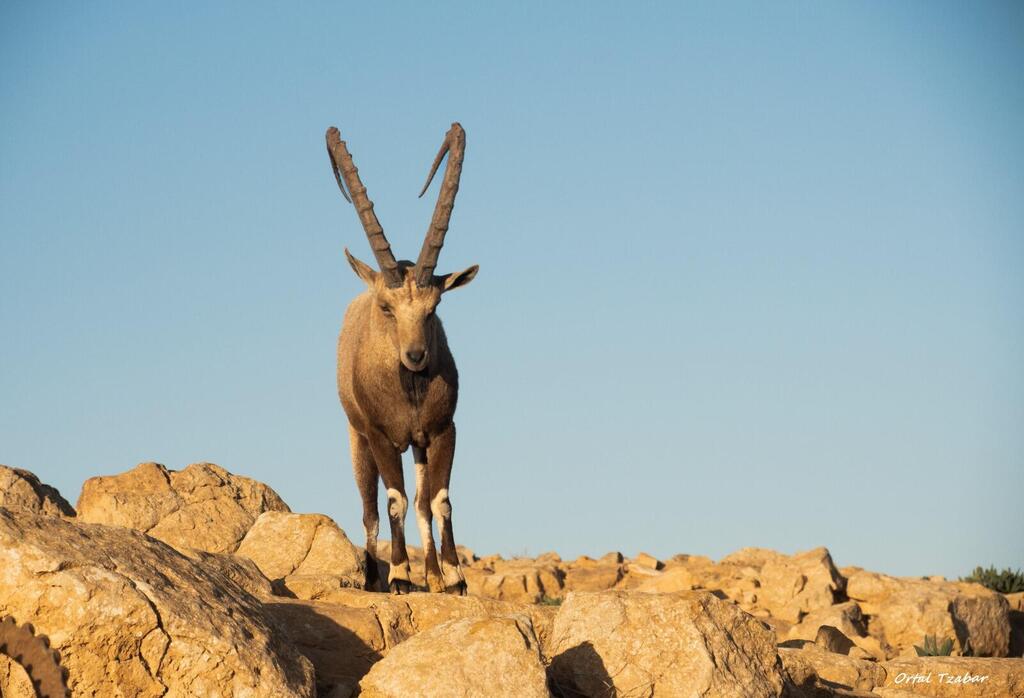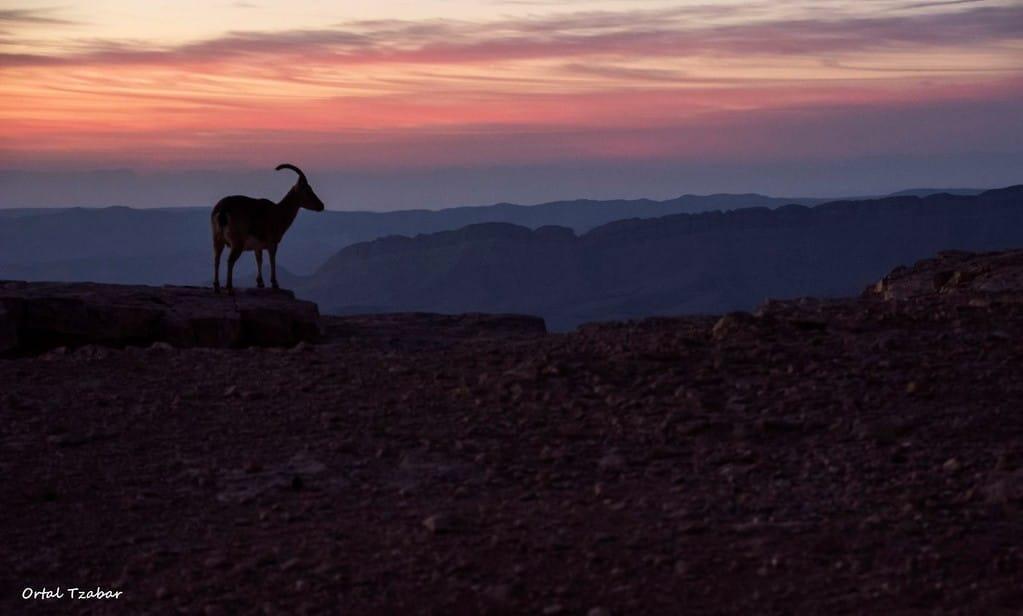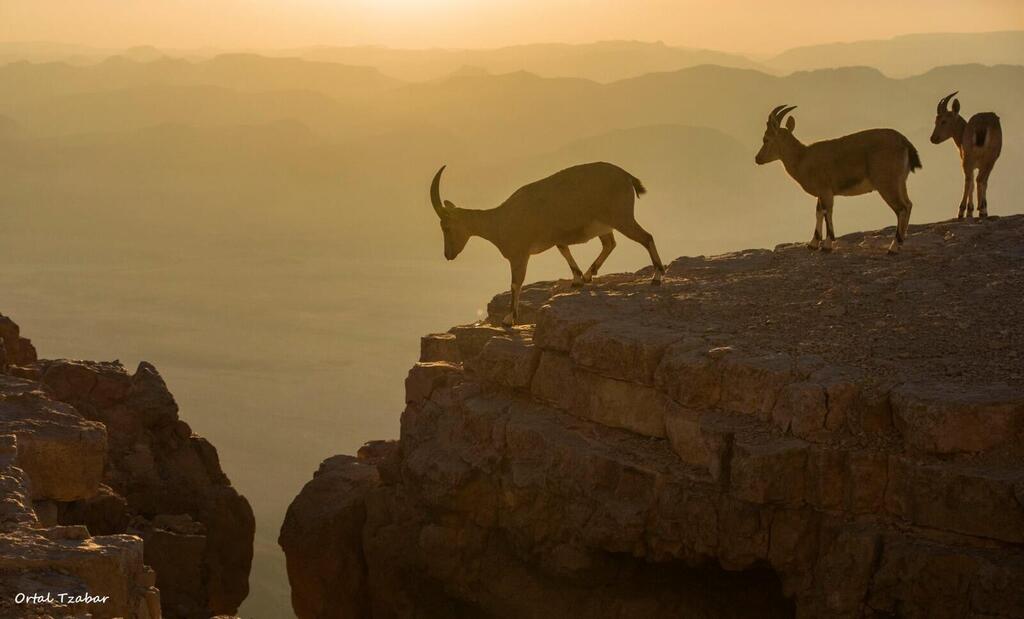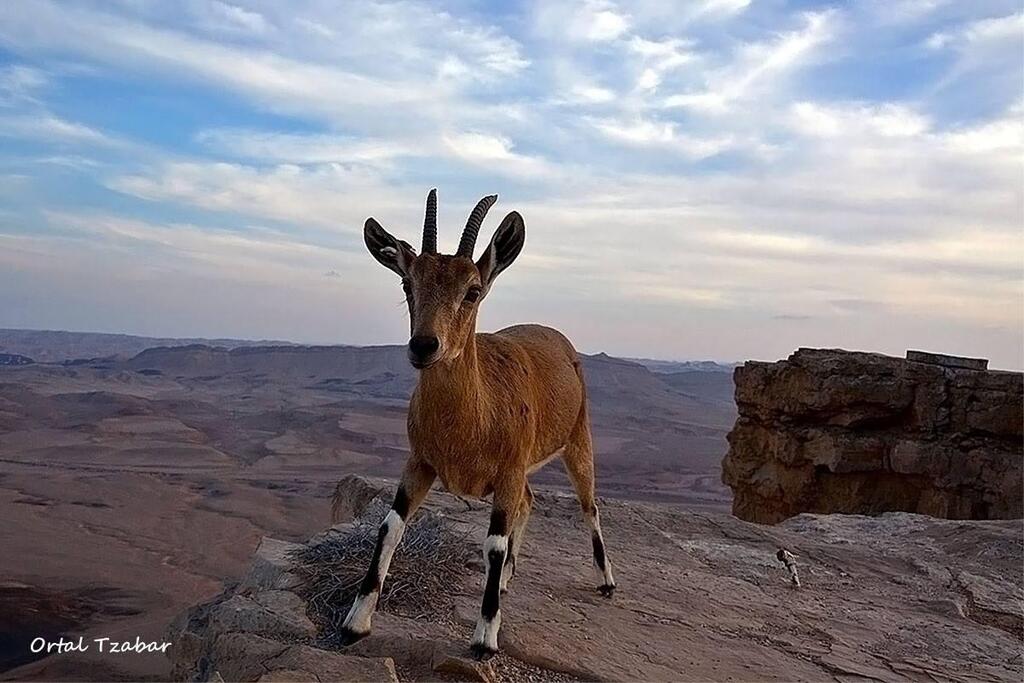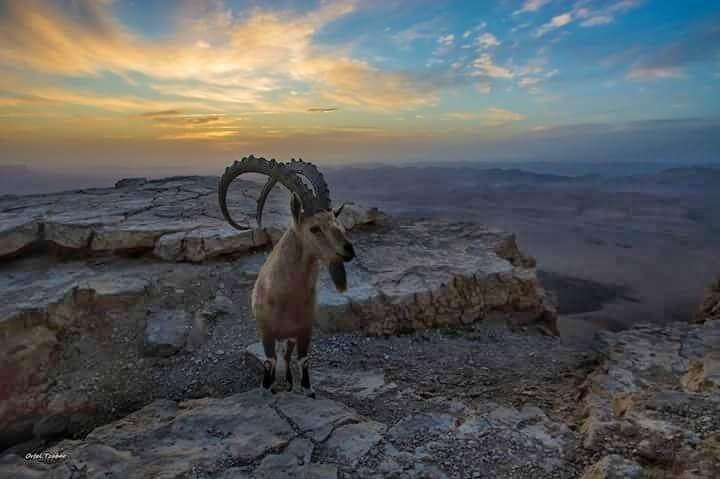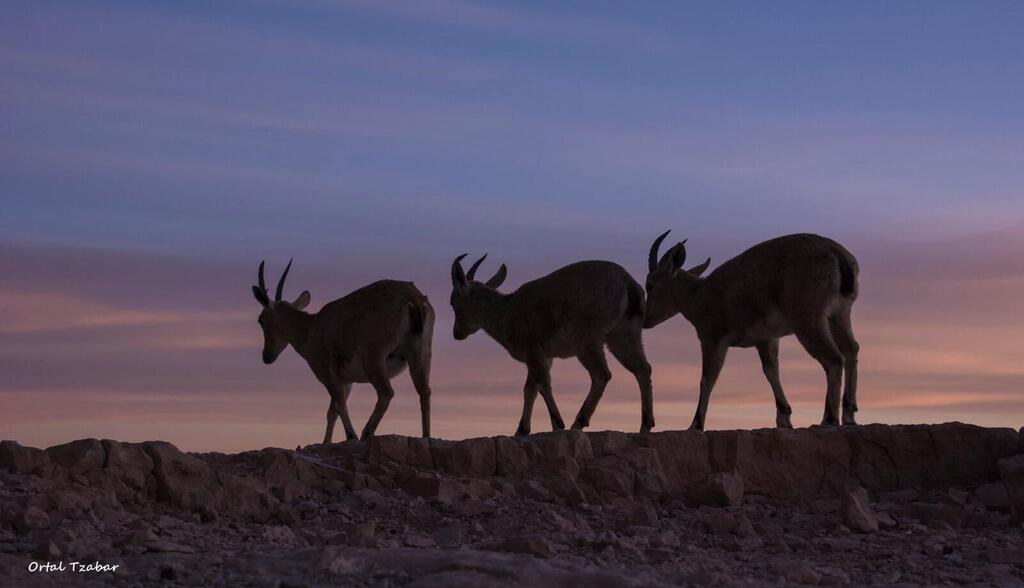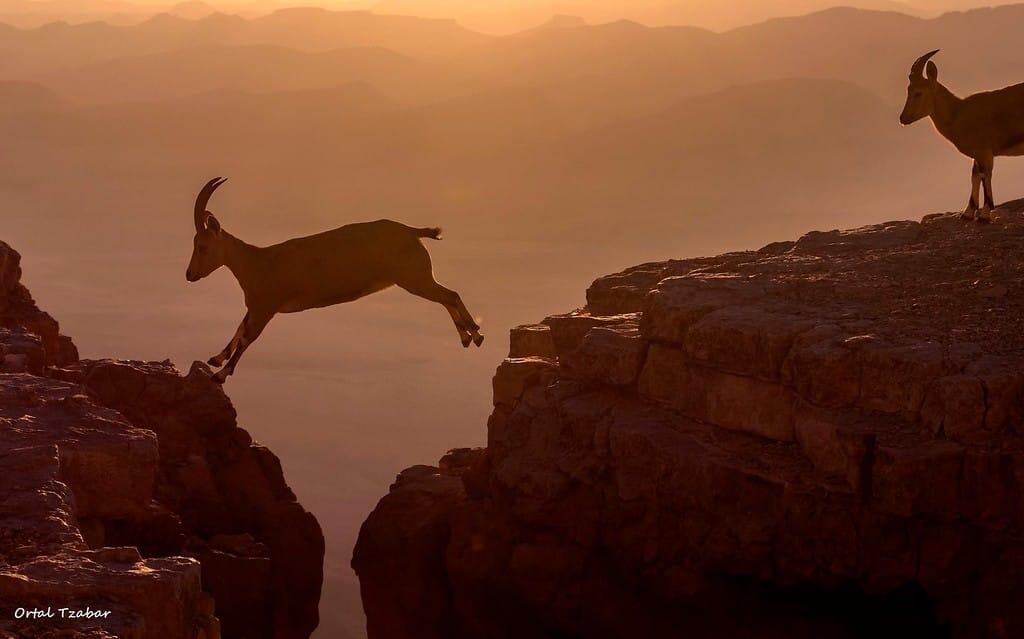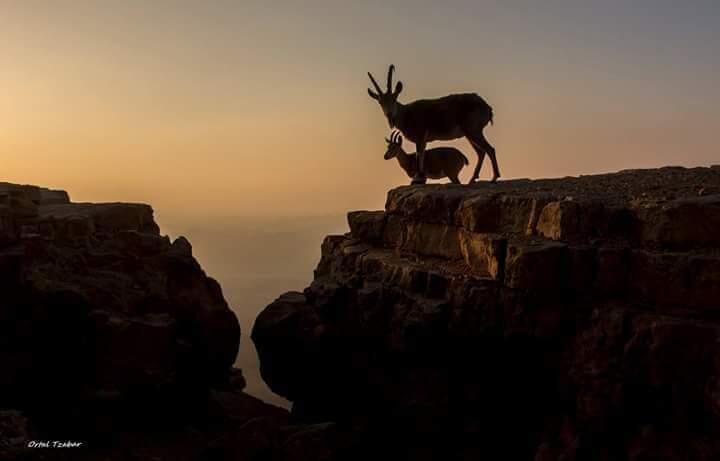Ortal Tzabar, a nature photographer, has been capturing images of ibexes in southern Israel’s Mitzpe Ramon over the years, and has produced some exquisite results.
More stories:
"In the early morning, before sunrise, a small herd of ibexes emerges from Mitzpe Ramon, heading toward the visitor center,” she said. “They ascend carefully, surveying their surroundings and effortlessly leaping between the rocks. I’ve been observing and photographing ibexes in Mitzpe Ramon for years.”
“This noble animal inspires me, and I love following their movements and habits and documenting them," Tzabar added.
"Observing ibexes in their natural habitat is an extraordinary experience. In the cooler morning and evening hours, they venture out to graze and swiftly climb the cliffs,” she said.
“Nonetheless, it's important to maintain a distance from the ibexes so as to not disturb their natural behavior. Illegal hunting and interference with their habitats still pose a threat to their population," she also said.
Tzabar added that the Nubian ibexes have a light-colored coat that provides them with good camouflage in the desert, along with the males having long, curved horns. Their powerful legs and hooves are adapted for rugged terrain and enable them to climb and leap quickly across the desert's cliffs and crags.
They primarily feed on the sparse desert vegetation and find water sources and salt in nature to help them endure the heat and dryness.
According to the Israel Nature and Parks Authority, the Nubian ibex was once prevalent mainly in the Middle East and Saudi Arabia. In Israel, its limited population survived within the Judean Desert.
Following conservation efforts for these animals, the ibex population began to recover and spread in the Judean and Negev deserts. After the Six-Day War in 1967, the Ibex population also expanded to the northern part of the Judean Desert.
Today, the Nubian ibex mainly roams the Judean Desert, Negev and the mountains of Eilat, and due to conservation efforts it can also be found in some regions of the Golan Heights.
In total, there are around a thousand individual ibexes in Israel and about 2,500 worldwide and can also be found in other Middle Eastern countries such as Jordan, Egypt and Oman). The Nubian ibex is an endangered species.
Some of the threats that ibexes face include damage to their habitats, hunting, poaching and ingestion of human food products such as plastic bags, which are sometimes found in their bodies during post-mortem analyses.
A female ibex is capable of giving birth to a single kid and if she is mature and experienced, in good physical condition, and in an area with sufficient food, she’ll give birth to twins. In years with less favorable conditions, births are fewer, and the survival rate of the new kids is lower.
Birthing usually occurs in the spring, and mating takes place in the autumn before the rains, so the ibex essentially “gambles” on vegetation conditions following the rains – deciding whether to give birth to a single kid or twins.
The kid primarily nurses during the first three weeks but continues to stay with its mother until the next kid is born. As the young males grow, they usually leave the herd and attempt to establish their own territory. Females, on the other hand, usually remain within the herd.
In hers of ibex, "nursery groups" have been observed, where a number of females collectively care for the kids, leaving one or two females to protect the young in a sheltered area among the cliffs. This allows the other females to graze in more dangerous areas.
As they mature, the kids engage in playful behaviors where they mimic adult behaviors in play fights, thus assessing their strength among their peers from a young age.
A male Nubian ibex weighs 52-60 kg, while a female weighs 23-40 kg. The length of the horns in males is up to 130 cm, and in females, it's up to 40 cm. The winter coat of the Nubian ibex is thicker (though not as dense as that of the Himalayan ibex, which has a thickness of 20 cm).
In summer, their coat becomes thin and shiny, reflecting a significant amount of sunlight. During the hot hours, ibexes rest in the shade and, before resting, they dig with their front hooves and remove the top layer of warm soil in order to remain cool.


